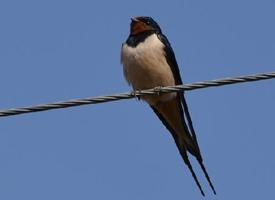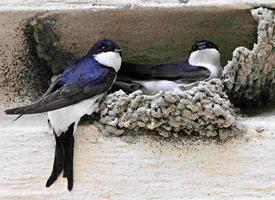
Statut de conservation
| Intrépide |
Description de l'animal
The Congo martin, scientifically named Riparia congica, is a fascinating bird species belonging to the swallow family. This relatively less-known bird is distinguished by its unique adaptations and behaviors, making it a subject of interest among ornithologists and bird enthusiasts alike.Physically, the Congo martin exhibits a modest size, typical of many in the swallow family, with a sleek body that is highly adapted for aerial maneuvers. The plumage of this bird is generally characterized by a blend of dusky browns and soft grays, allowing it to blend seamlessly into its natural habitat. One of the most striking features of the Congo martin is its tail, which, like many of its cousins, is forked, aiding in its agility and speed in flight.
The natural habitat of the Congo martin spans across the central regions of Africa, particularly around the Congo basin. This bird prefers environments close to water bodies such as rivers, lakes, and wetlands, where insects, its primary food source, are abundant. The proximity to water is also crucial for the construction of their nests, which are typically built into the banks of rivers or cliffs, using mud to form cup-shaped structures. This choice of nesting site offers protection from predators and the elements, ensuring a safe haven for their offspring.
The diet of the Congo martin primarily consists of flying insects, which it catches with remarkable precision while in flight. This hunting technique showcases the bird's exceptional flying skills, including the ability to perform sharp turns and sudden stops in mid-air. The agility and speed of the Congo martin not only facilitate its hunting but also play a crucial role in its social interactions and mating displays.
Breeding season brings about a flurry of activity within the Congo martin populations. Males and females engage in intricate aerial displays, showcasing their flying prowess to attract mates. Once paired, both parents invest considerable effort in constructing their nests, incubating the eggs, and feeding the hatchlings. This cooperative breeding behavior underscores the social nature of the Congo martin, with communal living often observed outside of the breeding season.
Despite its intriguing characteristics, the Congo martin remains relatively understudied, with much of its behavior and ecology still shrouded in mystery. Conservation status assessments are scarce, and while there are no immediate threats known to significantly impact its population, the ongoing degradation of its natural habitats poses a potential risk. The preservation of wetland areas and the maintenance of clean, unpolluted water bodies are crucial for the continued survival of the Congo martin and countless other species that depend on these ecosystems.
In summary, the Congo martin (Riparia congica) is a remarkable bird species whose life cycle and behaviors are closely intertwined with the aquatic ecosystems of central Africa. Its adept flying abilities, social structure, and nesting habits make it a fascinating subject for further study, highlighting the importance of habitat conservation in ensuring the biodiversity of our planet.
Animaux similaires
Nouvelles photos d'animaux
Top 10 des animaux
- Dolphin gull (Leucophaeus scoresbii)
- Diana monkey (Cercopithecus diana)
- Moustached guenon (Cercopithecus cephus)
- Galápagos tortoise (Geochelone nigra complex)
- Russian tortoise (Testudo horsfieldii)
- Japanese macaque (Macaca fuscata)
- Stone loach (Barbatula barbatula)
- Greek tortoise (Testudo graeca)
- Common flying dragon (Draco volans)
- Colossal squid (Mesonychoteuthis hamiltoni)


